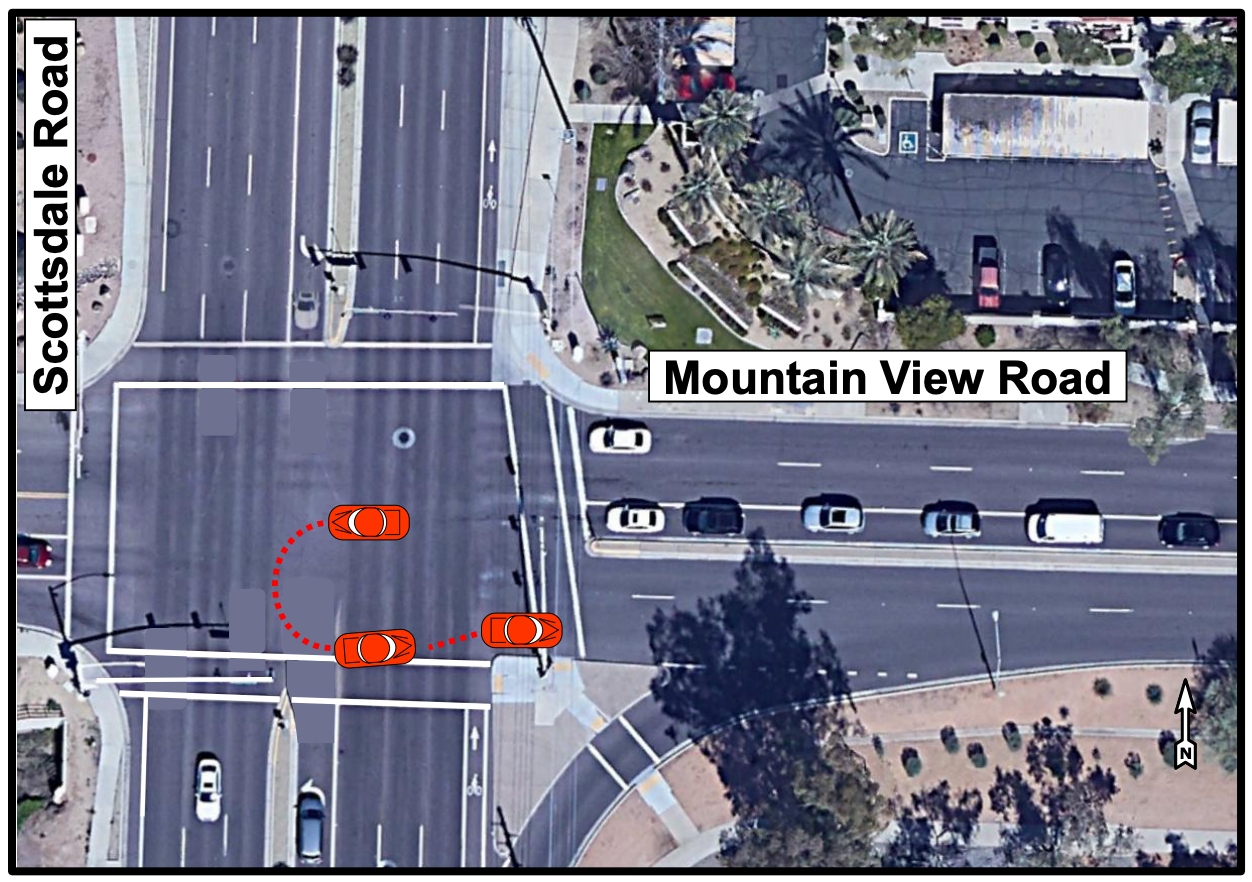By Paul Basha, traffic engineer, Summit Land Management
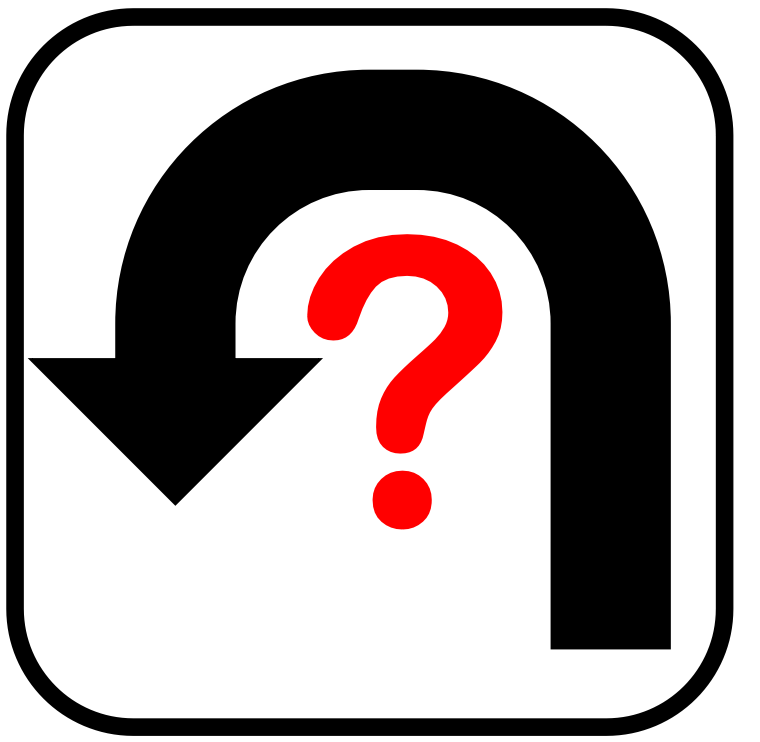
Yep.
Like left-turn arrows, the traffic engineering profession has mixed opinions of U-turns. Traffic engineers who believe safety is preeminent in all circumstances, wish to prohibit U-turns. Traffic engineers who believe efficiency provides the safest street system, always allow U-turns. Most traffic engineers are on the spectrum between these two extremes. While the laws vary considerably, jurisdictions tend to allow u-turns unless specifically prohibited. However, the rules appear to require U-turn drivers to be vigilant.
Astonishingly difficult to discover u-turn laws for most states. The only mention of U-turns in Arizona Revised Statutes is allowing a driver to make a u-turn from a center two-way left-turn lane. The Arizona Driver License Manual informs us that u-turns are prohibited on freeways (rather frightening if some drivers need the book to tell them). The Arizona book also tells us that “U-turns are permitted as long as the movement can be made safely, does not interfere with other traffic and is not prohibited by signs. When making a U-turn, you must yield to approaching traffic and make the turn only when it is safe to do so.” Where’s the adventure in that?
The Colorado Driving Handbook attempts to be helpful: “U-turns are forbidden unless they can be made without endangering other traffic. . . . U-turns are normally permitted where your vehicle can be seen for a great distance.” “Forbidden” is rather ominous. So, who decides the interpretation of endangering other traffic? The driver, their passenger(s), the oncoming driver, the driver in the following car, the truck driver in front, a nearby police officer, a judge several months later?
Does “normally permitted” have any meaning?
California Vehicle Code Division 11, Chapter 2, Article 3, 21451 states:
“(a) A driver facing a circular green signal shall proceed straight through or turn right or left or make a U-turn unless a sign prohibits a U-turn. Any driver, including one turning, shall yield the right-of-way to other traffic and to pedestrians lawfully within the intersection or an adjacent crosswalk.
(b) A driver facing a green arrow signal, shown alone or in combination with another indication, shall enter the intersection only to make the movement indicated by that green arrow or any other movement that is permitted by other indications shown at the same time. A driver facing a left green arrow may also make a U-turn unless prohibited by a sign. A driver shall yield the right-of-way to other traffic and to pedestrians lawfully within the intersection or an adjacent crosswalk.”
So in California, u-turns are allowed at a traffic signal, unless prohibited by a sign. ?
Oregon Vehicle Code 811.365 is the opposite of California’s law:
“(1) A person commits the offense of making an illegal U-turn if the person is operating a vehicle and the person turns the vehicle so as to proceed in the opposite direction in any of the following places:
(a) Within an intersection where traffic is controlled by an electrical signal. This paragraph does not apply where posted otherwise.
(b) Upon a highway within the limits of an incorporated city between intersections.
(c) At any place upon a highway where the vehicle cannot be seen by another driver approaching from either direction within a distance of:
(A) 500 feet within the incorporated limits of a city; or
(B) 1,000 feet outside a city.”
“Commits the offense”, so much gentler. And Oregon defines u-turn. Evidently, they like u-turns as much as self-pump gasoline stations. In Oregon, u-turns are prohibited at a traffic signal and in a city, unless allowed by a sign.
Good enough, one more reason to either like or dislike either California or Oregon.
Excluding Oregon, u-turns are apparently at the discretion of the driver. A libertarian’s dream world of personal accountability. So the question remains, why are u-turns sometimes prohibited? Typically, u-turns are prohibited where drivers have repeatedly revealed their inability to negotiate u-turns safely or efficiently. One such example is in Scottsdale, westbound Mountain View Road at Scottsdale Road.
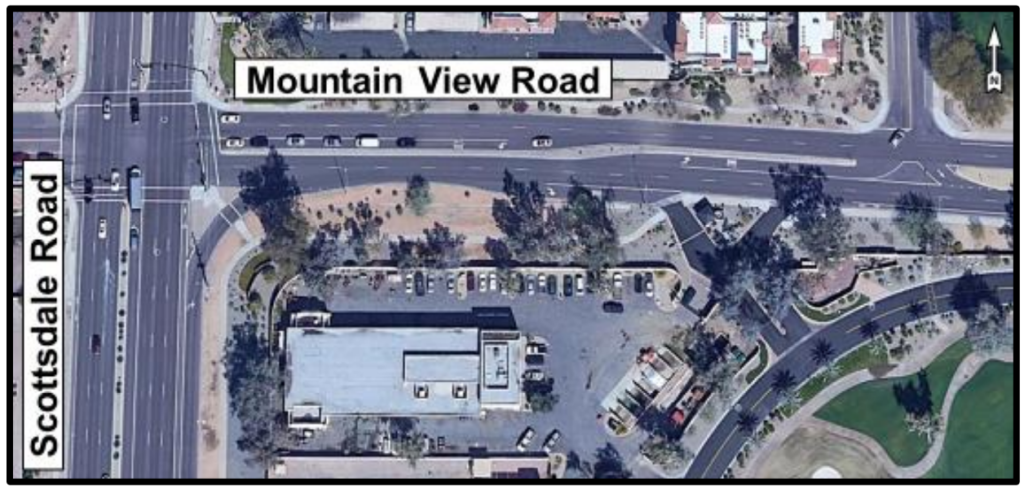
Because Mountain View Road is a relatively high-volume high-speed road, it has a median to permit left-turns only at designated locations. Gainey Ranch is a gated community with private streets. Many Gainey Ranch residents live north of Mountain View Road and east of Scottsdale Road. These residents can use the Gainey Ranch Golf Course, tennis courts, and fitness center. The most convenient travel is westbound on Mountain View Road, a u-turn at Scottsdale Road, then eastbound to the driveway with a right-turn into the private street system of Gainey Ranch.
(Oh, desire a Kauai Hyatt vacation? The Gainey Hyatt is identical, except a smaller body of water.)
Unfortunately, many drivers who attempted this u-turn were unsuccessful. They managed to hit the curb or have several iterations of driving backward and forward to avoid hitting the curb. This resulted in delay and collision potential on both streets for other vehicles driving normally and safely. As shown in the aerial photograph, numerous vehicles wait for the left-turn.
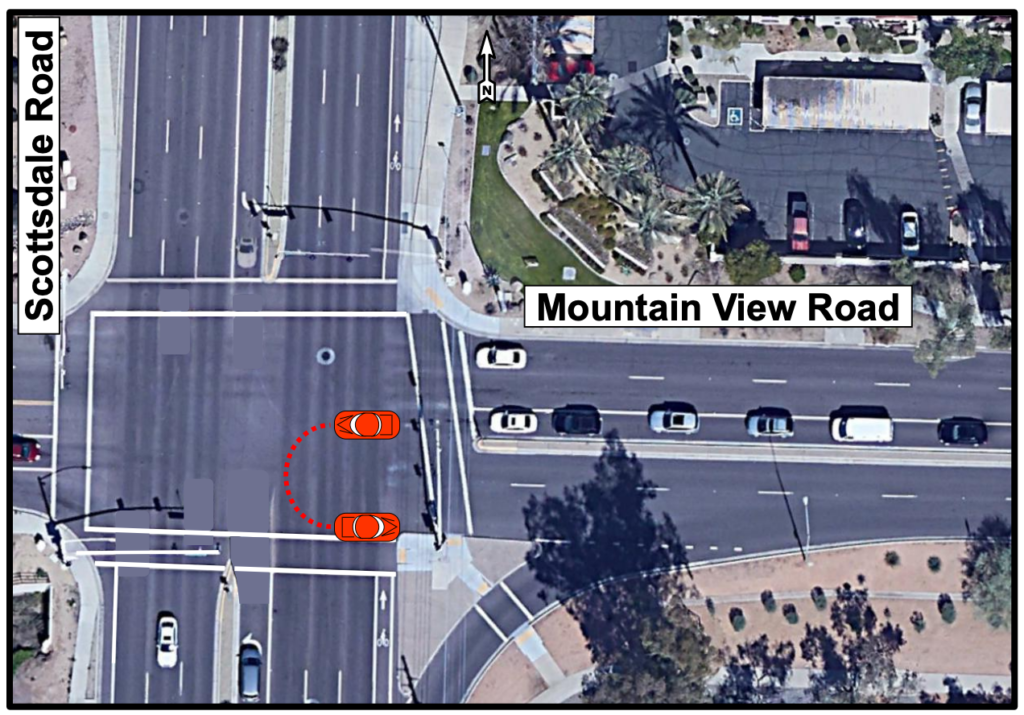
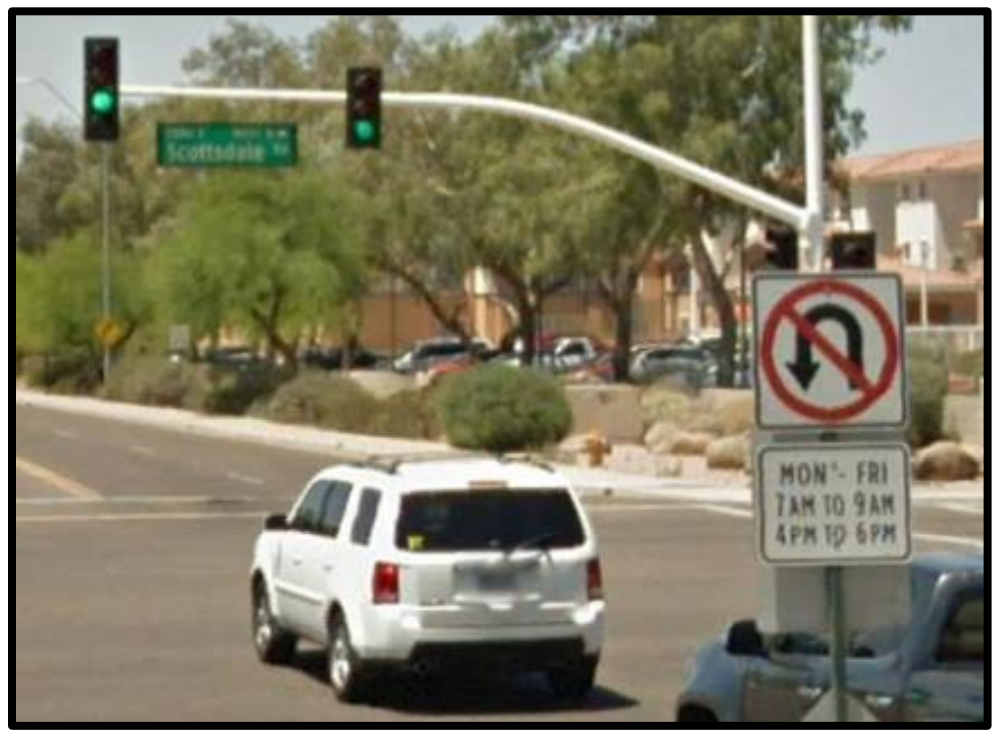
Most streets with two lanes-perdirection prohibit u-turns because drivers think they can properly negotiate the uturn, but do not possess the skill. At this location, a compromise was reached. U-turns are prohibited only during peak traffic hours. Apparently, poor drivers can hit the curb and block traffic between 9 AM and 4 PM.
If drivers simply drove further into the intersection to begin the u-turn, they would easily avoid the curb. This greater travel distance prior to the u-turn can cause difficulties as following drivers may not understand the red car is u-turning instead of left-turning. However, if the u-turning car is moving slowly, no harm occurs and no exchange of insurance information is necessary. Though would be much better if someone would invent a u-turn signal.
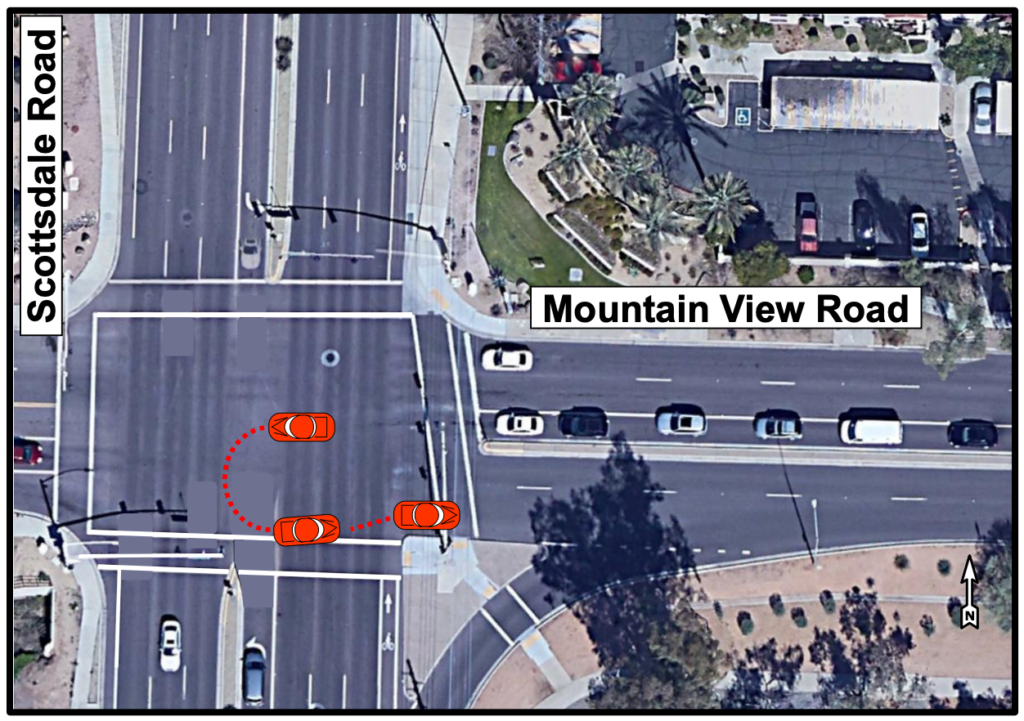
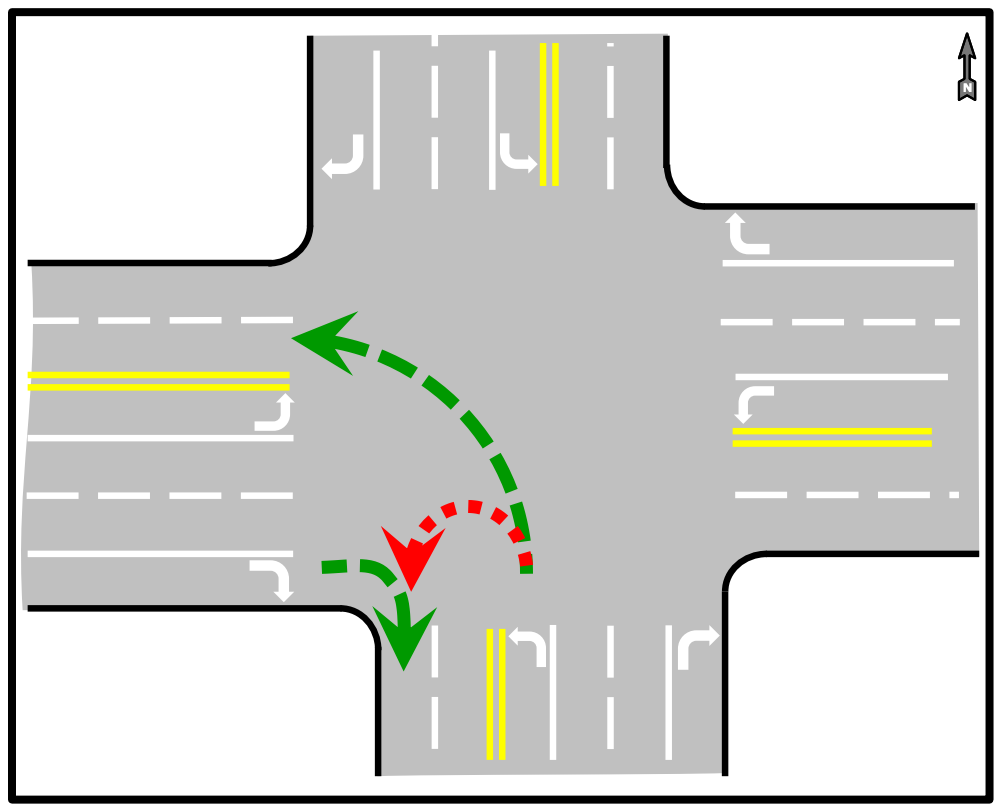
Another common reason to prohibit U-turns is when a conflicting rightturn lane and rightturn arrow exists. Both the u-turn and right-turn would have green arrows, likely resulting in unpleasant encounters.
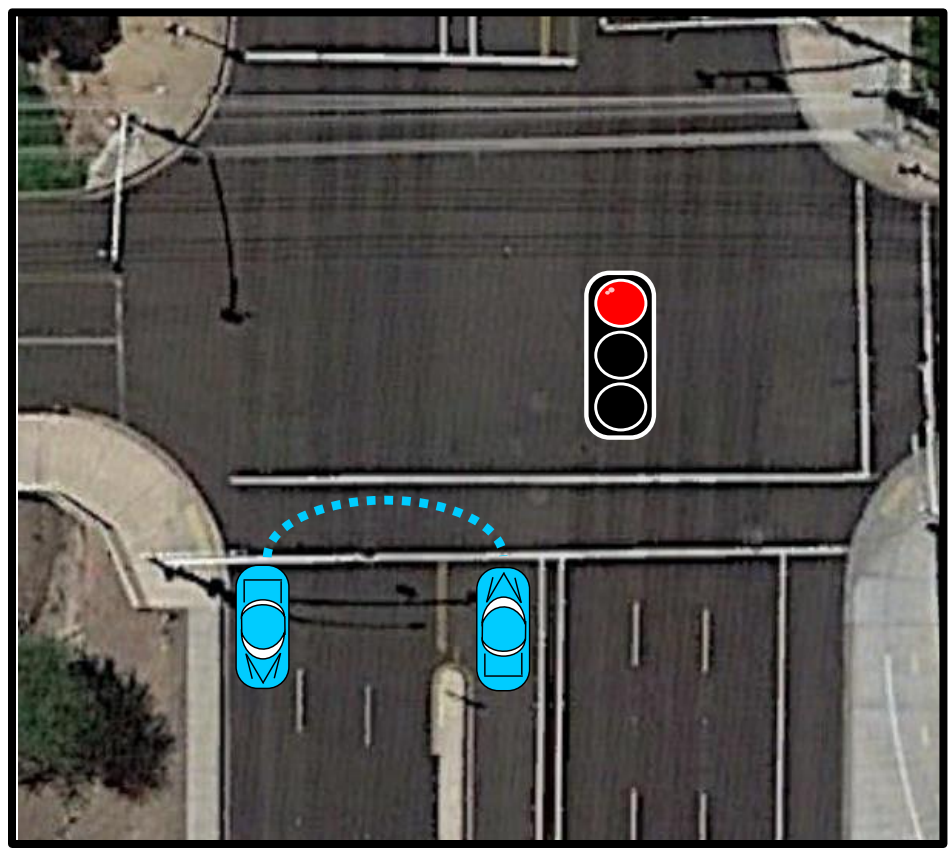
An interesting, littleknown fact. Please do not tell anyone because rampant knowledge would create difficulties for all. The blue car movement on a red light is legal. Provided that the blue car remains in the crosswalk, that is, the u-turn path does not extend into the intersection, the red light is not violated. This will remain our little secret, ok?
In summary, signs prohibiting u-turns exist for good reason. Feel free to question authority, without acting on it, in this circumstance. Other than driving in Oregon, or another state where u-turns are prohibited unless specifically allowed, u-turn at will. Please know the responsibility to avoid a collision is yours. Not a profound concept, and applicable to all driving actions, what say?
Curious about something traffic? Call or e-mail Paul at (480) 505-3931 and pbasha@summitlandmgmt.com.

